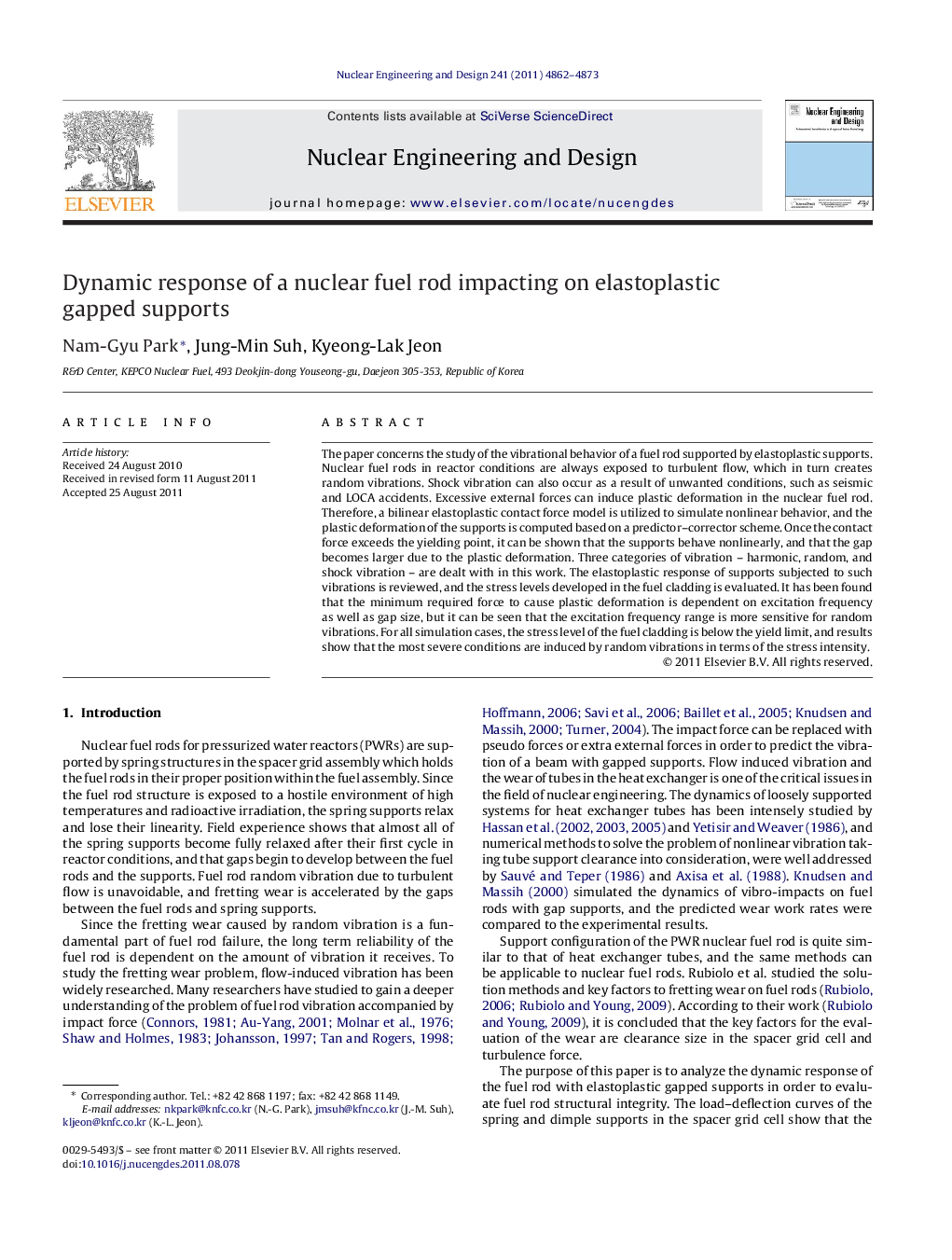| Article ID | Journal | Published Year | Pages | File Type |
|---|---|---|---|---|
| 297598 | Nuclear Engineering and Design | 2011 | 12 Pages |
The paper concerns the study of the vibrational behavior of a fuel rod supported by elastoplastic supports. Nuclear fuel rods in reactor conditions are always exposed to turbulent flow, which in turn creates random vibrations. Shock vibration can also occur as a result of unwanted conditions, such as seismic and LOCA accidents. Excessive external forces can induce plastic deformation in the nuclear fuel rod. Therefore, a bilinear elastoplastic contact force model is utilized to simulate nonlinear behavior, and the plastic deformation of the supports is computed based on a predictor–corrector scheme. Once the contact force exceeds the yielding point, it can be shown that the supports behave nonlinearly, and that the gap becomes larger due to the plastic deformation. Three categories of vibration – harmonic, random, and shock vibration – are dealt with in this work. The elastoplastic response of supports subjected to such vibrations is reviewed, and the stress levels developed in the fuel cladding is evaluated. It has been found that the minimum required force to cause plastic deformation is dependent on excitation frequency as well as gap size, but it can be seen that the excitation frequency range is more sensitive for random vibrations. For all simulation cases, the stress level of the fuel cladding is below the yield limit, and results show that the most severe conditions are induced by random vibrations in terms of the stress intensity.
► Dynamic behaviors of the fuel rod with elastoplastic gapped supports are studied. ► The required force to induce plasticity depends on frequency band and gap size. ► Turbulence alone could not induce plastic deformation. ► For shock vibration, the transient responses including the propagating stress wave were observed. ► The fuel rods are able to maintain structural integrity for any assumed condition.
